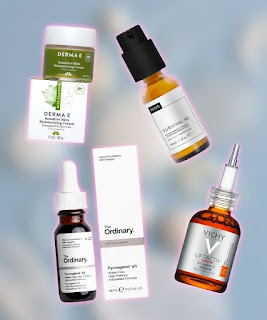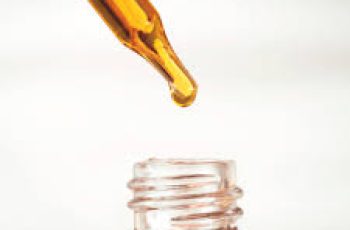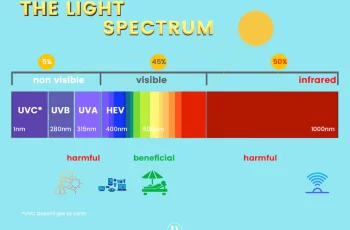How Often Should You Use a Face Mask?
This is definitely the year to give yourself a little extra time and hit the recharge button. Face masks play a big role in this. Packed with skin-loving ingredients, they are the perfect extra care product to take your skincare routine to the next level and become the ultimate glow-enhancing self-care. Today we’re going to answer some of the most frequently asked questions about face masks. So stay tuned to learn more about face masks and how often you should use them.
Can you use a face mask every day?
This really depends on the mask and your skin type. Most face masks can be used up to three times a week, while others should only be used as directed. The easiest way to avoid unnecessary skin irritation or breakouts is to read the instructions printed on the packaging. As with all skincare products, it really comes down to personal preference and skin type. This means that whatever works for you is the best course of action.
You have to remember that the results you get from using a face mask are short-lived. If you find yourself wanting to apply a face mask every day to treat a specific skin concern, such as blemishes, dull skin, or wrinkles, it would be more beneficial to invest in a serum or facial oil, as both are designed for long-term results. Using concentrated serums and face masks in your daily routine can provide you with the best way to take care of your skin in the most effective way.
Formulas and ingredients vary in their efficacy and effectiveness, which means there is always a face mask that can treat your skin and all its problems. To better understand how often you should use a face mask, we will introduce you to the most popular face masks and explain why their ingredients help your skin look healthy.
Clay and Mud
When you hear the word face mask, there is no doubt that the first thing that comes to mind is clay and mud. They have a thick, sticky consistency and are mainly dedicated to detoxifying the skin, making them ideal for oily and blemish-prone skin types. They are able to draw out excess sebum, dirt, bacteria and product residue that can clog pores and cause breakouts. You can use a clay or mud mask up to 3 times a week and should not be left on the skin for more than 15 minutes, as they work well to absorb excess sebum that can dry out the skin.
Cream or Gel
You will find that cream masks can deeply moisturize the skin, making signs of dryness, dehydration and dullness a thing of the past. They usually have a lighter consistency and are enriched with active ingredients that help regenerate and restore almost all skin types. Since these masks usually contain high levels of hyaluronic acid, you can use them without too much worry about irritation or reactions. However, it is always recommended to discuss the formula with your doctor or dermatologist if you have any questions. They can also vary as it is an “overnight mask” that needs to be applied generously to the skin and then left to sleep to allow the ingredients to penetrate into the skin. If your skin is otherwise healthy and intact, you can use a cream or gel mask 3 to 4 times a week.
Charcoal
Similar to clay or mud masks, you can achieve similar results when using a charcoal mask. Activated charcoal absorbs skin impurities and fights breakouts, skin congestion, and oiliness. Charcoal masks are best for combination, oily, and acne-prone skin. The application time is 15 minutes and use once or twice a week. Prolonged use may cause the skin to feel tight and develop dry and flaky patches. If you have a dry skin type or sensitive skin but still want to reap the detoxifying benefits, use a charcoal mask once a week or every few weeks with your doctor or dermatologist’s approval.
Peel Away
Peel Away masks typically contain AHAs and BHAs, which means they are highly effective but not for the faint of heart (or sensitive skin). The exfoliating benefits of these masks will help anyone who suffers from skin congestion or texture. After the peel, you’ll be left with radiant skin and a healthy complexion, with all signs or buildup of dirt, bacteria, and product residue removed. Since these masks are considered the most aggressive in terms of effects and formula, using them once a week is the best way to achieve results without irritating your skin.
When Should You Use Masks Regularly?
The best time to use a mask is during your skincare routine, i.e. your skin should be thoroughly clean and makeup-free. After applying the mask, wait 15 minutes for it to take effect. After rinsing off the formula, it’s best to wipe with a cotton pad soaked in a chemical exfoliant to remove any remaining product or residue from your skin. This ensures your skin is clean and ready for the next steps in your daily regimen, such as serums, moisturizers, and oils.
Should I wash my face after applying a mask?
This depends on the mask and what it contains. For example, when using a night mask, you need to wash off any residue, otherwise a product buildup will form, which can lead to clogged pores and blemishes. As mentioned before, for best results, you should start using the mask after cleansing your skin. If you wash your face instead of just applying an acid tonic, you will wash off the brightening effects of the mask, which is not ideal!
Is it better to apply a mask with a brush?
You may find that applying a mask with a brush gives you better overall results, from distribution to the longevity of the product. When you use a mask with a brush, you will find that the whole experience is like going to a spa, it is more hygienic, and the application is cleaner. Of course, don’t forget to keep the brush clean. There are some mask brushes on the market, but a simple flat foundation brush will do the job perfectly. Not having to dip your fingers into a pot or use your hands to apply the mask to your skin will prevent the formula from becoming too messy to work with.
Can I use two masks on the same day?
Yes you can, just make sure they target different skin areas and have complementary ingredients. For example, the first mask could be a clay formula that helps to remove impurities from the skin and open up the pores. After cleansing the skin with a clay or charcoal mask, you can regenerate the skin with a hydrating nourishing cream or gel mask. This can be a regular mask or a night mask, as long as the ingredients regenerate the skin and keep it hydrated. For more information on night masks, check out our blog dedicated guide to using night masks.
Below are some answers to the most common questions we receive about masks. Although it can be a little confusing at times, I hope you now feel more confident using them. You’ll find that applying a mask will become second nature and your skincare routine will work perfectly, leaving your skin glowing.
DQH Knowledge drop: In your 20s, your skin cell turnover decreases. (Cell turnover is a key component in keeping your skin youthful.) You know what else slows down? Your collagen production. Starting in your 20s, collagen decreases by about 1 percent per year. Should you want to prevent fine lines and wrinkles, start by eliminating behaviors that contribute to premature aging. “If it’s bad for you, it’s bad for your skin,” says dermatologist Michel Somenek.
“Cigarette smoking reduces blood flow to the skin and causes premature wrinkling and a dull skin texture. Making the repeated pursed motion to inhale can also cause smoker’s lines. Alcohol and recreational drugs are toxins for the skin that damage its cellular structure and DNA,” Somenek tells us. “The faster you eliminate vices while you are young, the better chance your skin and body have to recuperate.” Also, adopting an anti-aging routine in your 20s is key. After all, the best offense is a good defense. We spoke to Somenek and experts Joshua Ross and Audrey Kunin to find out more.
Keep reading for the best anti-aging products for your 20s, according to skincare professionals.
Sunscreen
“We all know that the sun is the number one cause of skin aging and starting the prevention in your 20s is very important,” Ross says. “The majority of your sun damage won’t start to appear until you’re in your 30s, so don’t wait until you see it surface or you’ll be behind the curve. Stay ahead of it with a good-quality zinc-based sunscreen worn daily.”
Farmacy Green Defense Daily Mineral Sunscreen
An invisible sunscreen with SPF 30, plus botanical extracts meant to protect skin with tons of antioxidants. Bonus: It’s clean and fine to use under makeup.
Bareminerals Complexion Rescue™ Tinted Moisturizer Broad Spectrum SPF 30
Although we recommend you use your SPF and moisturizer separately, we also understand moments when you don’t have time or energy for that extra step. For those times, this bareMinerals moisturizer is a great thing to have on hand.
Vitamin C Serum
“A great introduction to anti-aging is to start with a vitamin C serum in your morning skincare routine,” Ross says. “It’s a powerful antioxidant that will neutralize free radicals and brighten the skin.” He adds that it’s a great way to counteract the effects of the sun’s harmful rays, which, as previously mentioned, are among the biggest causes of premature aging.
Drunk Elephant C-Firma™ Vitamin C Day Serum
The Drunk Elephant C-Firma is a lightweight serum that promises to give skin a glow by combining the brightening powers of vitamin C with ferulic acid, l-ascorbic acid, and vitamin E. The included sodium hyaluronate is meant to replace hydration loss, so you shouldn’t have to deal with any irritation.
Sunday Riley C.E.O. Rapid Flash Brightening Serum
This potent serum is jam-packed with vitamin C (15 percent, to be exact), which means it’s a potential superstar at both brightening skin and dousing it in antioxidants.
Peptides
Using peptides on your skin has many benefits, says Somenek. “The skin barrier is what defends the body against pollution, UV rays, bacteria, and toxins. It can be damaged by several everyday factors. Using topical peptides aids in building a stronger barrier,” he says. “Peptides comprise elastic fibers, which are a type of protein. These fibers help to make skin appear taut and firm. Peptides can also help repair damaged skin, relieve inflammation, and even out skin tone. Some peptides can kill acne-causing bacteria that is common in 20-somethings.”
Kunin agrees, saying, “Peptides are an excellent entry point for supporting collagen.” She recommends looking for face and eye treatments that contain these collagen-boosting powerhouses.
Charlotte Tilbury Magic Eye Rescue Cream
This Charlotte Tilbury super-emollient eye cream has a base of coconut oil and shea butter (read: it’s incredibly hydrating). Botanicals plus peptides are meant to help reduce dark circles and boost collagen, respectively.
This creamy moisturizer serves up potent collagen-boosting peptides and pycnogenol, and antioxidant-rich vitamin C. “Instead of sitting on top of the skin, peptides penetrate the outer layer so they go deep. The ‘signals’ they send tell the cells to produce elastin and collagen, which are needed for youthful-looking skin,” explains Somenek.
At-Home Peel Pads
Remember that skin cell turnover fiasco we talked about earlier? One way to help support it is by exfoliating. “Exfoliation is important to help keep skin fresh and luminous,” Kunin says. She recommends using at-home peel pads as an easy and effective way to exfoliate.
“The goal in your 20s is to fight the slowing pace of cell turnover. It is wise to use products that gently exfoliate, yet still remove oil and other impurities. Products that have Alpha Hydroxy Acids (AHA) or Beta Hydroxy Acids (BHA) are a good choice.”
According to Somenek, you should only exfoliate two to three times a week. “People of all ages are guilty of over-exfoliating and that can be too much of a good thing,” he says.
Dermadoctor Kakadu C Intensive Vitamin C Peel Pad
A few swipes of this Derma Doctor powerful peel pad promise to leave your skin glowing and smooth, thanks to the seven (yes, seven) types of chemical exfoliants, including AHA and BHA. It also contains vitamin C via Kakadu plum extract for added brightening and antioxidant protection.
KEY INGREDIENTS Kakadu plum extract is sourced from the Kakadu plum, a fruit grown in northern Australia. It contains vitamin C, which restores the skin’s natural barrier, increases collagen production, and soothes irritation.
Dr. Dennis Gross Skincare Alpha Beta® Universal Daily Peel Pads
These are the gold standard of peel pads, with a cult following and over 900 five-star reviews on Sephora. They’re easy to use and contain a blend of anti-aging exfoliating acids.
Emollient Night Cream
“In your 20s, you need to start upping the hydration in your skincare routine. You may have been cautious of over-moisturizing because of acne in your teens, but as you enter your 20s, your skin transitions and becomes drier,” Ross says. “I recommend an emollient night cream added into your evening skincare regimen.”
“Twenty-somethings need to make sure that they are not using creams that will clog their pores and cause excess oil production,” says Somenek. Opt for non-comedogenic products.
Cerave Skin Renewing Night Cream
One great choice is the CeraVe Skin Renewing Night Cream, which is a non-comedogenic night cream that leaves skin soft and glowy. It combines the moisturizing powers of ceramides and hyaluronic acid.
RoC Retinol Correxion Max Hydration Creme
“The best night cream ingredients contain retinol, benzoyl peroxide, and/or salicylic acid or hyaluronic acid. The goal is to moisturize, yet remove excess oil,” says Somenek. This Roc Retinol Correxion cream fits the bill as it contains both hyaluronic acid and retinol so it promises to moisturize while also being non-comedogenic.



